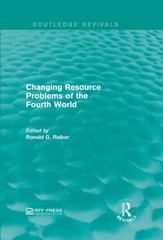I need to summarize several paragraphs fortomorrow but I don't how to do it so I need help
The assumption of risk aversion is basic to many decision models in managerial economics. Managerial Application 16.2 Why Are Lotteries Popular? The success of state-run lotteries is convincing evidence that consumers and investors display risk-averse behavior, many in our society display risk-seeking behavior, especially especially when substantial sums of money are involved. when small sums of money are involved. The popularity of Still, the eagerness of consumers to take on enormous lotteries stems from the fact that ticket buyers appear eager risks when small sums of money are involved has made to pay $1 for a bet that has an expected return of less than $1. gambling one of America's great growth industries. If When only 50 percent of lottery-ticket revenues are paid out egislative agendas are any indication, Americans can in the form of prizes, each $1 ticket has an expected return of xpect to see even more riverboat gambling, card clubs, only 50c. In such circumstances, the "price" of $1 in expected offtrack betting parlors, and casinos in their own backyards. return is $2 in certain dollars. The willingness to pay such a Indian-run casinos are also becoming increasingly popular. premium for the unlikely chance at a lottery payoff that might Americans are so eager to gamble that they are shifting reach into the millions of dollars stems from the fact that long-established leisure-time expenditures. Today, U.S. such opportunities are rare and lottery-ticket buyers value consumers spend more on legal games of chance than on them highly. Many of the poor, uneducated, or elderly have no movie theaters, books, amusement attractions, and recorded opportunity for hitting the jackpot in their careers. The lottery music combined! is their only chance, however remote, at a substantial sum of Pouring quarters into slot machines is easy and appealing money. It should therefore come as no surprise that lottery- to a growing number of Americans. ticket buyers tend to be poor, uneducated, and elderly. The success of state-run lotteries is noteworthy because See: Jonathan Clements, "You're Not Super Rich? You Lucked Out," The Wall Street it reflects risk attitudes that are fairly unusual. Typically, Journal Online, October 21, 2007, http://online.wsj.com. Chapter 16: Risk Analysis 643 Possible Risk Attitudes Three possible attitudes toward risk are present: aversion to risk, indifference to risk, Risk Aversion and preference for risk. Risk aversion characterizes individuals who seek to avoid or Desire to avoid minimize risk. Risk neutrality characterizes decision makers who focus on expected or minimize uncertainty. returns and disregard the dispersion of returns (risk). Risk seeking characterizes decision makers who prefer risk. Given a choice between more risky and less risky investments Risk Neutrality Focus on expected with identical expected returns, a risk averter selects the less risky investment and a risk values, not return seeker selects the riskier investment. Faced with the same choice, the risk-neutral investor dispersion. is indifferent between the two investment projects. Risk Seeking In practice, many individuals prefer high-risk projects and the corresponding potential Preference for for substantial returns, especially when relatively small sums of money are involved. speculation. Entrepreneurs, innovators, inventors, speculators, and lottery-ticket buyers are all examples of individuals who display some risk-seeking behavior. Risk-neutral behavior is exhibited in some business decision making. However, most managers and investors are predominantly risk averters, especially when substantial dollar amounts are involved. Relation Between Money and Its Utility Diminishing At the heart of risk aversion is the notion of diminishing marginal utility for money. If Marginal Utility someone with no money receives $50,000, it can satisfy his or her most immediate needs. When additional increments of If such a person then receives a second $50,000, it will obviously be useful, but the second money bring ever $50,000 is not quite as necessary as the first $50,000. The marginal utility of the second smaller increments $50,000 is less than the utility of the first $50,000. Diminishing marginal utility of money of added benefit implies that the marginal utility of income diminishes for additional increments of money. Figure 16.4 graphs the relation between money and its utility, or value. In the figure, utility is measured in units of value or satisfaction, an index that is unique to each individual







